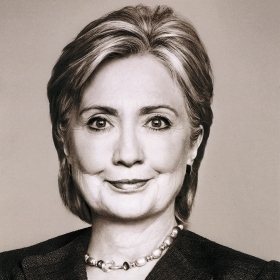Filled with frothy celebrity intel and dishy fashion-insider news, Hijacking the Runway by Teri Agins ’75 tells the story of how celebrity involvement in the fashion industry has evolved.

Teri Agins ’75
Hijacking the Runway
Gotham Books
304 pages, $28
Filled with frothy celebrity intel and dishy fashion-insider news, Hijacking the Runway by Teri Agins ’75 is an entertaining read. Agins, a veteran fashion reporter who writes the “Ask Teri” fashion advice column for the Wall Street Journal, tells the story of how celebrity involvement in the fashion industry has evolved from modeling and promoting designer fashions to creating and designing their own products.
For fashion designers focused on “the art of making true fashion,” the celebrity influx into design seems ludicrous, yet it poses a real threat to their way of doing business. For retailers like Macy’s, Target, H&M, and more—as well as designers hoping to restore some glitter to fading brands—celebrity involvement is the ticket to photo ops, social-media buzz, increased sales, and getting hordes of passionate fans through their doors.
Celebrities have played a role in fashion marketing since 1858, when Frederick Worth created a magnificent wardrobe for Napoleon III’s trophy bride, Eugénie. Yet it wasn’t until Elizabeth Taylor’s “celebrity perfume,” Passion, launched in 1987 that the industry recognized just how lucrative celebrity-branded products could be.
Two social forces came to a head toward the end of the 20th century, leading celebrities to the forefront of the industry, Agins explains. First, the 1990s trend toward casual dressing (driven by tech entrepreneurs on the West Coast) gave rise to basic, affordable clothing that stayed in vogue longer than a season, while “it” accessories with visible logos became the mark of fashion status. Second, the technologies that had made the West Coast wealthy spawned online content and “reality” TV shows—and public obsession with media stars and what they were wearing. When singer and reality TV star Jessica Simpson worked with manufacturer Vince Camuto to create her eponymous shoe line, it leveraged the two trends and sparked a celebrity stampede into fashion.
Agins demonstrates how different the fashion business can be for a celebrity working with an established manufacturer to create a product with his or her name on it—like Sarah Jessica Parker (accessories), Lady Gaga (perfume), or Donald Trump (suits)—compared to the bumpy road faced by untrained celebrities attempting to design their own apparel, like Lindsay Lohan and Kanye West, who both experienced farcical runway failures. Meanwhile, a few other celebrities—like former Spice Girl Victoria Beckham, and former child actresses Mary-Kate and Ashley Olsen—learned the business from the ground up and built successful, well-respected fashion houses almost in spite of their celebrity status.
Agins ends with a question that elucidates her thesis perhaps more clearly than her book’s title. Are celebrities doing away with the true art of fashion by lending their names to mass-produced products at affordable prices? Or, are they bringing more excitement to fashion, increasing sales opportunities, and democratizing an elitist industry? Agins slyly suggests it’s the latter.
Trowbridge worked for Ann Taylor and Eileen Fisher in New York City, started Puzzle Apparel, an online fashion brand, and recently joined Hointer, a Seattle startup offering technology solutions for retailers.


